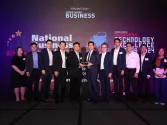How a strategic environmental assessment could help change Myanmar's approach to hydro
By Kate LazarusOptimising project siting and configuration are the most effective environmental and social risk avoidance measures in hydropower development. Siting is often decided very early on in project development, primarily on a project-by project basis.
What the hydropower sector needs is to move away from a project-by-project to a landscape-level approach that will assess and manage cumulative impacts of multiple projects across a watershed.
Myanmar's Ministry of Natural Resources and Environmental Conservation and Ministry of Electricity and Energy are leading a country-wide Strategic Environmental Assessment (SEA) for the hydropower sector to achieve this. The SEA is looking at environmental and social values from a broad river-basin perspective to understand the entire river system upstream and downstream. If we understand these values within an entire basin, we can determine potential impacts and better mitigate risks.
The SEA focusses on the main river basins in Myanmar that have hydropower potential, including the Ayeyarwady-Chindwin, Thalnwin, Sittaung, Tanintharyi and Rakhine coastal basins, Mekong, Kaladan, and Myit Mo Hka/Bago.
The SEA is currently in the early part of Stage 1 of three stages and the team is consulting diverse stakeholders in each river basin to gain an understanding of the environmental and social hotspots that need to be protected during hydropower planning. This information will then be layered with technical data to help project planners better understand, at the earliest possible stages of planning, how to avoid major environmental and social impacts.
Project proposals pursued by the Myanmar government following the SEA process will be based on a stronger understanding of potential environmental and social impacts as the SEA will indicate levels of sensitivities. Information on sustainability with project feasibility data, and determination of bankability of projects will then enable a better understanding of a project's overall potential.
Till now, the sustainability element was not considered in project choices. Once completed, the SEA will contribute to better understanding of the balance between economic development needs and the sustainable use and protection of Myanmar's natural resources and social diversity.
To put the SEA in context, Myanmar is in its earliest phases of policy and guideline development for the hydropower sector. There are limited policies, procedures, and plans in Myanmar to drive sustainability linking water, food, and energy objectives, while there is strong opposition to large hydropower projects in the country.
The SEA could be a milestone for the hydropower sector, leading to the development of integrated policy and plans to guide the sustainability of the hydropower sector within the context of the energy mix that the country wishes to develop.
Scaling out to a country-wide perspective through the SEA process will give a broad understanding of the baseline environmental and social situation of the country. However, deeper knowledge is needed at the basin scale to address the cumulative impacts from multiple hydropower projects. Many of these impacts go beyond what a single developer can resolve.
The SEA provides an opportunity for the public and private sector to come together to collectively try to resolve issues through informed decision-making based on stakeholder engagement and gender aspects of hydropower development, while building capacity along the way.
The outcomes of the SEA will hopefully enable an approach that considers the importance of basin-wide cumulative impact assessment and management for future hydropower development in Myanmar.









![Cross Domain [Manu + SBR + ABF + ABR + FMCG + HBR + ]](https://cmg-qa.s3.ap-southeast-1.amazonaws.com/s3fs-public/styles/exclusive_featured_article/public/2025-01/earth-3537401_1920_4.jpg.webp?itok=WaRpTJwE)
![Cross Domain [SBR + ABR]](https://cmg-qa.s3.ap-southeast-1.amazonaws.com/s3fs-public/styles/exclusive_featured_article/public/2025-01/pexels-jahoo-867092-2_1.jpg.webp?itok=o7MUL1oO)









 Advertise
Advertise


